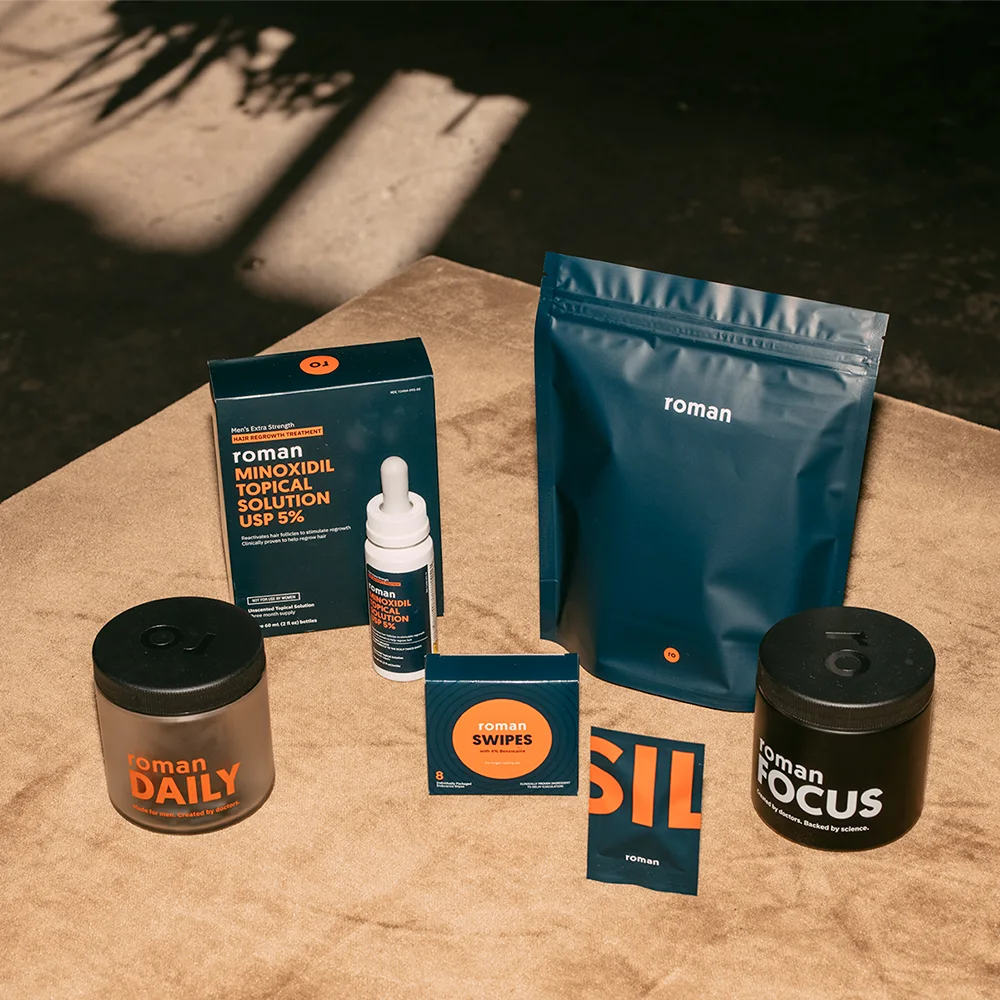Here's what we'll cover
Here's what we'll cover
Many of us associate hot flashes with women going through menopause, but hot flashes in men are possible, too. They are most common in men with prostate cancer who are undergoing androgen deprivation therapy (ADT) (NCI, 2021). Hot flashes in men can be mild, moderate, or severe, with varying impacts on quality of life.
If you are a man experiencing hot flashes, know that you’re not alone, and there are treatment options available for you. Read on to learn more about what causes hot flashes in men, how people experience them, and most importantly, what your options are for reducing symptoms and living more comfortably.
What causes hot flashes in men?
Hot flashes (sometimes referred to as “hot flushes”) in men aren’t associated with changing hormone levels that result from aging, as they are for women in menopause. The most common cause of hot flashes in men is androgen deprivation therapy (ADT), a type of prostate cancer treatment that works by decreasing testosterone levels. About 40% of men with prostate cancer receive ADT within 6 months of diagnosis (Jones, 2012).
Men receiving ADT experience hot flashes with varying intensity and frequency. Some men experience hot flashes once in a while, while others may experience them several times a day (Jones, 2012). When hot flashes are intense or frequent, they can significantly impact a person’s well-being.
Each person experiences hot flashes a little differently, but the main symptoms are (Jones, 2012):
A sudden feeling of warmth in the body, which can be intense
Sweating and flushed skin, especially on the face and torso
Night sweats
Increased heart rate
Feelings of anxiety
Symptoms of hot flashes usually pass within a few minutes but can last up to 20 minutes.
Even though hot flashes during androgen deprivation treatment are common, certain factors may put you at a higher risk of experiencing them. These include having specific genetic vulnerabilities, a lower BMI, and being younger (Gonzalez, 2015).
Although most hot flashes are caused by ADT, there are other possible causes of hot flashes in men. These include (NCI, 2021):
Surgeries that remove the testicles
Gonadotropin-releasing hormone therapy
Estrogen therapy
Treatments with opioids
Use of tricyclic antidepressants
Steroid use
Other side effects of ADT
Besides hot flashes, people receiving ADT as part of their prostate cancer treatment may experience other side effects, including lowered sex drive, cholesterol changes, memory issues, breast growth, increased diabetes risk, erectile dysfunction, and signs of osteoporosis (Jones, 2012).
Thankfully, many of the side effects of ADT, including hot flashes, resolve after a person completes their cancer treatment. One study found that, although 93% of people receiving ADT experienced hot flashes, 99% of these men stopped having hot flashes within 12 months of finishing ADT (Dosani, 2017).
How to treat hot flashes in men
Although hot flashes can be challenging to live with, the good news is most men see a resolution of their symptoms soon after stopping androgen deprivation therapy (Dosani, 2017).
Still, that doesn’t mean you have to suffer through hot flashes while undergoing ADT. There are many treatment options available for managing male hot flashes, including hormone treatments, antidepressants, and lifestyle choices that promote increased health and wellness.
Estrogen therapy
Hormone replacement therapy like estrogen replacement therapy is often used to treat hot flashes in menopause, but it may be helpful in men with hot flashes, too. Although this treatment hasn’t been approved by the FDA for this use, studies have shown it to be highly effective in around 70% of men (Jones, 2012).
Progesterone therapy
Progesterone therapy is also quite effective at treating hot flashes in men. One form of progesterone resulted in a 75–80% reduction in symptoms, while another was effective in 91% of men. Sometimes progesterone treatment can increase prostate cancer growth, so it’s important to discuss these risks with your healthcare provider (Jones, 2012).
Gabapentin and pregabalin
Gabapentin and pregabalin are medications used to treat seizures, but they’ve both been shown effective in managing hot flashes in men. Gabapentin in particular has been studied extensively as a treatment. One randomized trial found that hot flash symptoms were reduced by up to 46% among people who received gabapentin, with few unpleasant side effects. Similar results have been seen with pregabalin (Jones, 2012).
Antidepressants
Antidepressants (specifically, SSRIs) have shown promise as a way to decrease hot flashes in men. Venlafaxine (Effexor), desvenlafaxine (Pristiq), and citalopram (Celexa) all reduced hot flash symptoms by 50–60%. Fluoxetine (Prozac) reduced hot flashes by 30–50% (Jones, 2012).
Stress reduction and therapy
Stress and anxiety reduction can help reduce hot flashes. Adding mindfulness meditation—including breathing, relaxation, and body scan exercises—to your daily routine is one option. Therapy, such as cognitive behavioral therapy (CBT), is another great way to manage stress. Hypnosis is also often used to help with hot flashes by reducing stress levels, regulating body temperature, and lower your heart rate (NCI, 2021).
At-home comfort measures
If you are experiencing frequent hot flashes, you can take some steps to keep your body and environment cooler. Consider wearing loose, breathable clothing. Keep your environment cool by using fans, air conditioners, and opening windows. Stay hydrated and have cold, damp cloths handy to cool yourself down when a hot flash strikes (NCI, 2021).
Always talk to your healthcare provider or oncologist before starting any medication, hormone treatment, or other treatment plans for hot flashes. Alternative medical therapies haven’t been studied extensively when it comes to hot flashes in men, though some may find them helpful. Consult with your medical team before trying any herbal supplements or vitamins purported to help with hot flashes (Jones, 2012).
DISCLAIMER
If you have any medical questions or concerns, please talk to your healthcare provider. The articles on Health Guide are underpinned by peer-reviewed research and information drawn from medical societies and governmental agencies. However, they are not a substitute for professional medical advice, diagnosis, or treatment.
Dosani, M., Morris, W. J., Tyldesley, S., et al. (2017). The relationship between hot flashes and testosterone recovery after 12 months of androgen suppression for men with localised prostate cancer in the ASCENDE-RT Trial. Clinical oncology (Royal College of Radiologists (Great Britain)), 29(10) , 696–701. doi:10.1016/j.clon.2017.06.009. Retrieved from https://pubmed.ncbi.nlm.nih.gov/28712786/
Gonzalez, B. D., Jim, H. S., Donovan, K. A., et al. (2015). Course and moderators of hot flash interference during androgen deprivation therapy for prostate cancer: A matched comparison. Journal of Urology, 194(3) , 690-695. doi:10.1016/j.juro.2015.03.026. Retrieved from https://www.auajournals.org/doi/10.1016/j.juro.2015.03.026
Jones, J. M., Kohli, M., & Loprinzi, C. L. (2012). Androgen deprivation therapy-associated vasomotor symptoms. Asian Journal of Andrology, 14(2) , 193–197. doi:10.1038/aja.2011.101. Retrieved from https://www.ncbi.nlm.nih.gov/pmc/articles/PMC3338189/
National Cancer Institute (NCI). (2021). Hot flashes and night sweats (PDQ®)–patient version. Retrieved from https://www.cancer.gov/about-cancer/treatment/side-effects/hot-flashes-pdq










